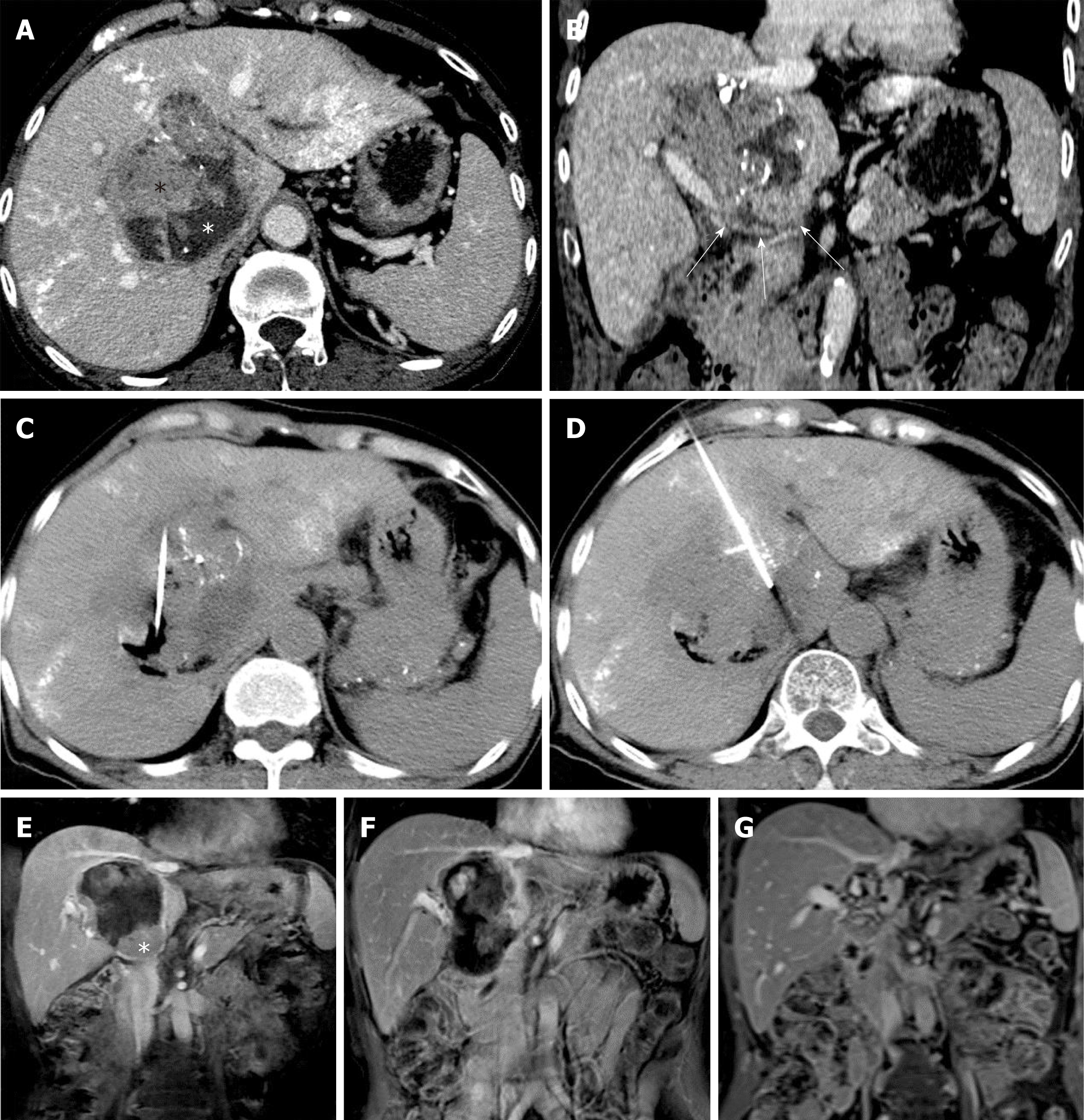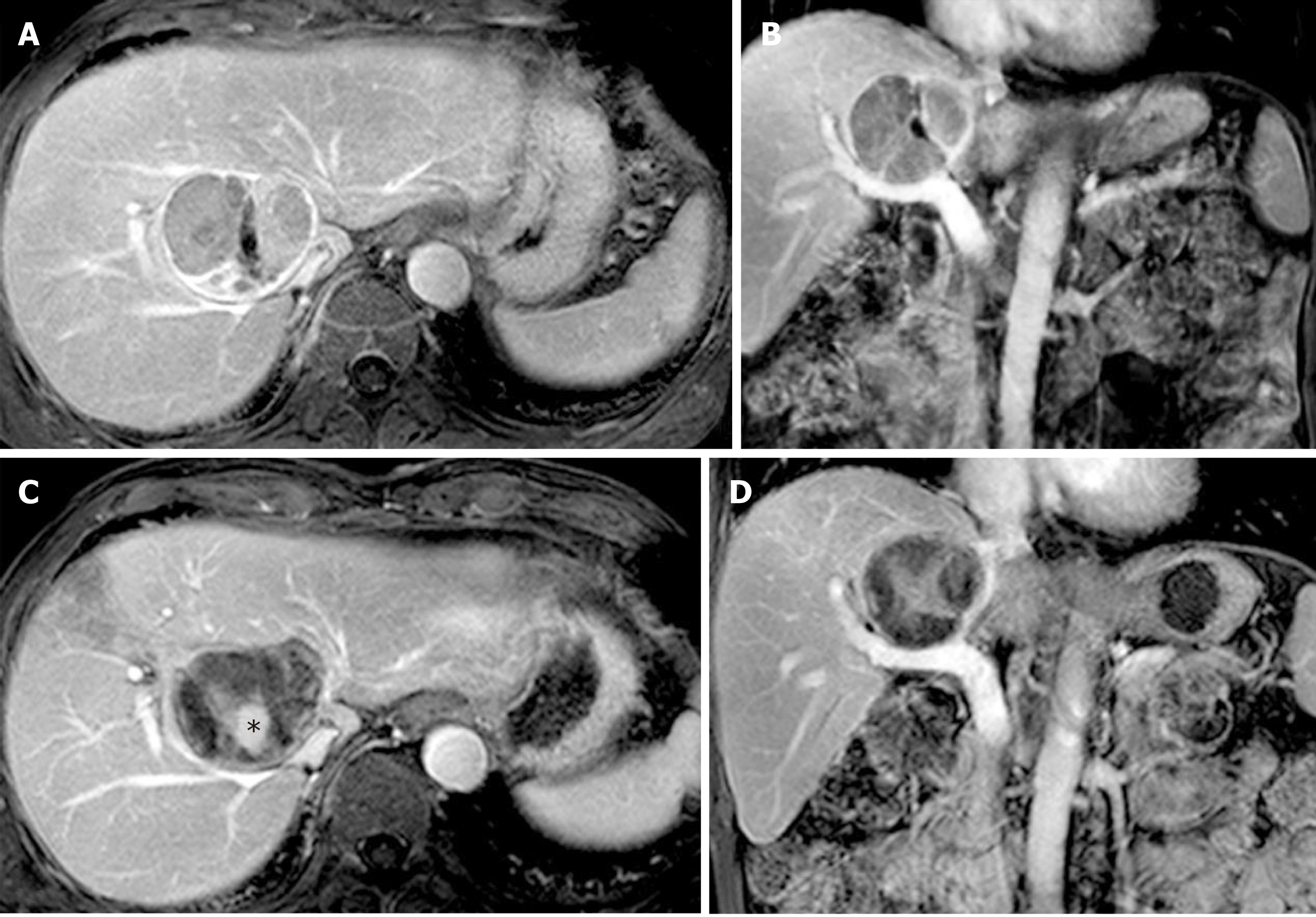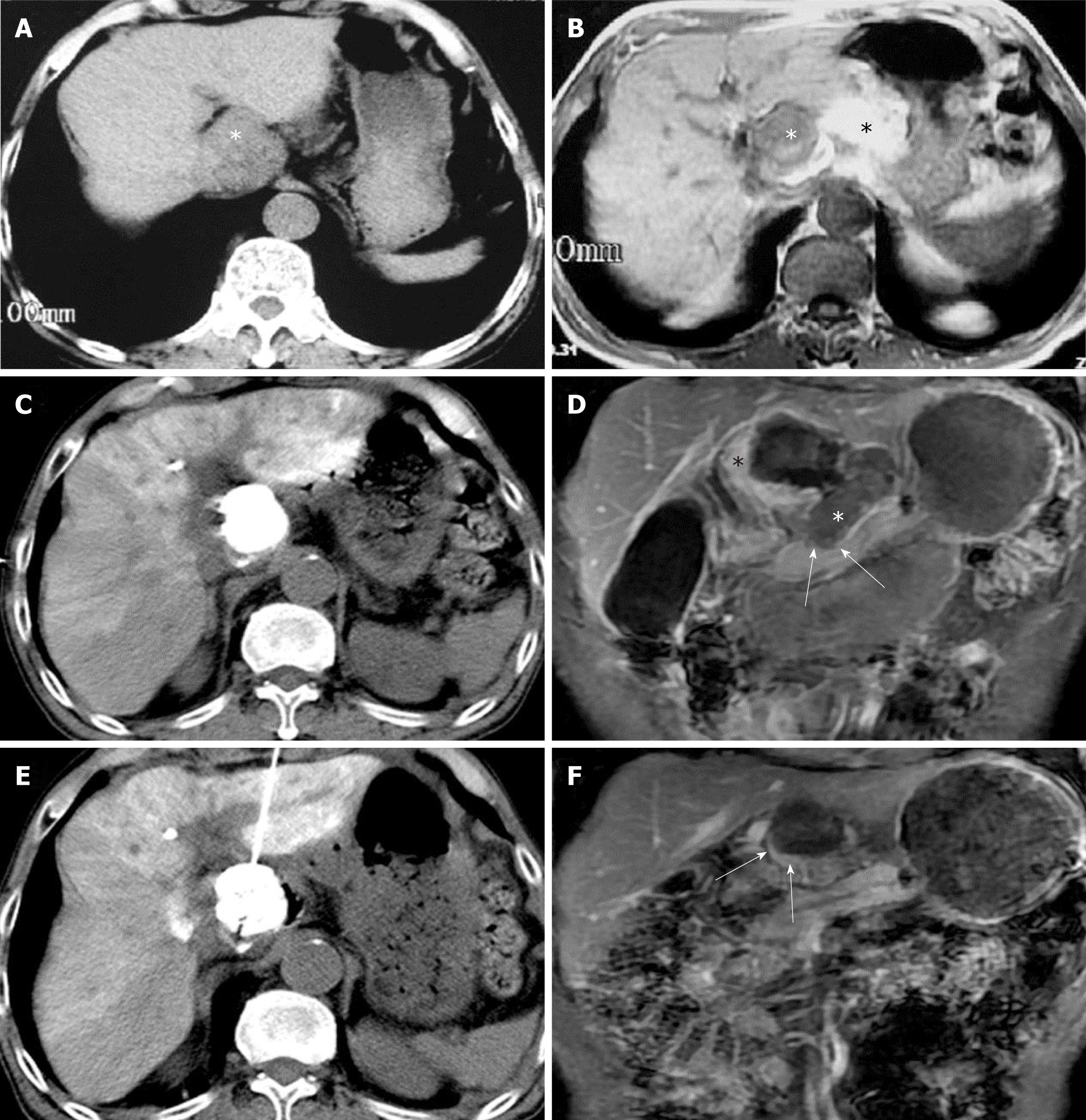Copyright
©The Author(s) 2019.
World J Clin Cases. Feb 26, 2019; 7(4): 508-515
Published online Feb 26, 2019. doi: 10.12998/wjcc.v7.i4.508
Published online Feb 26, 2019. doi: 10.12998/wjcc.v7.i4.508
Figure 1 Arterial-phase computed tomography images showing a large caudate lobe tumor enhanced after transarterial chemoembolization in a 61-year-old woman with confirmed hepatocellular carcinoma.
A: The tumor with poor lipiodol deposition was predominantly composed by isodense tissue (black asterisk), representing the contrast enhanced active part of the tumor and the hypodense necrotic region without enhancement (white asterisk). The hyperdensity in the hepatic parenchyma represents lipiodol deposition after TACE; B: The caudate lobe and porta hepatis were involved (white arrows); C and D: Computed tomography images taken during the ablation show precise placement of the RF electrode into the active regions of the tumor, and the area of destruction can be seen easily; E: The coronal magnetic resonance image (MRI) shows an enhanced inferior residual tumor after the first session of HRFA (white asterisk); F: No active tissue was detected after the second session of HRFA; G: The latest coronal post-contrast T1-weighted image shows focal atrophy and fibrosis formation, resulting in an irregular, non-active region in the caudate lobe about 20 mm in diameter. The bile ducts were slightly dilated on the latest follow-up MRI.
Figure 2 A well-defined active caudate lobe tumor adjacent to the right hepatic vein in a 69-year-old man with a history of tongue cancer after two sessions of TACE.
A and B: The enhanced part was predominant and had poor lipiodol deposition consistent with active tumor tissues; C and D: Post-contrast magnetic resonance imaging (MRI) images after HRFA therapy show a non-enhanced mass with hypointensity. The central irregular hyperintensity (black asterisk, C) was caused by the hemorrhagic content of the necrotic cavity, rather than by contrast enhancement. Relapse was not detected in the most recent MRI examination (data not shown).
Figure 3 Preoperative computed tomography and magnetic resonance imaging images of a 73-year-old male showing a large intrahepatic tumor in the caudate lobe.
A and B: A large intrahepatic tumor in the caudate lobe was confirmed as hepatocellular carcinoma by histopathology. A hyperintense mass was noted in the pancreatic neck region on T1-weighted imaging (black asterisk, B). This was shown to be a hematoma on subsequent exploratory laparotomy; C: CT images showing that lipiodol deposition involved almost the entire area of the lesion in the caudate lobe after TACE; D: Peripheral residual tumor medial to the necrotic cavity was demonstrated in a coronal post-contrast T1-weighted image (black asterisk). The non-enhancing soft tissue in the porta hepatis region inferior to the intrahepatic lesion and adjacent to the neck of pancreas (white arrows) is consistent with the shrunken hematoma after exploratory laparotomy (white asterisk). E: CT image showing the needle in the tumor during HRFA; F: A thin enhancing rim-like tissue inferior to the necrotic cavity (white arrows) is evident on the post-contrast T1-weighted image after HRFA therap. The necrotic region does not show enhancement. No relapse was detected during follow-up MRI examinations. This enhancing rim probably represents reactive granulation tissues, rather than residual tumor.
- Citation: Deng HX, Huang JH, Lau WY, Ai F, Chen MS, Huang ZM, Zhang TQ, Zuo MX. Hydrochloric acid enhanced radiofrequency ablation for treatment of large hepatocellular carcinoma in the caudate lobe: Report of three cases. World J Clin Cases 2019; 7(4): 508-515
- URL: https://www.wjgnet.com/2307-8960/full/v7/i4/508.htm
- DOI: https://dx.doi.org/10.12998/wjcc.v7.i4.508











